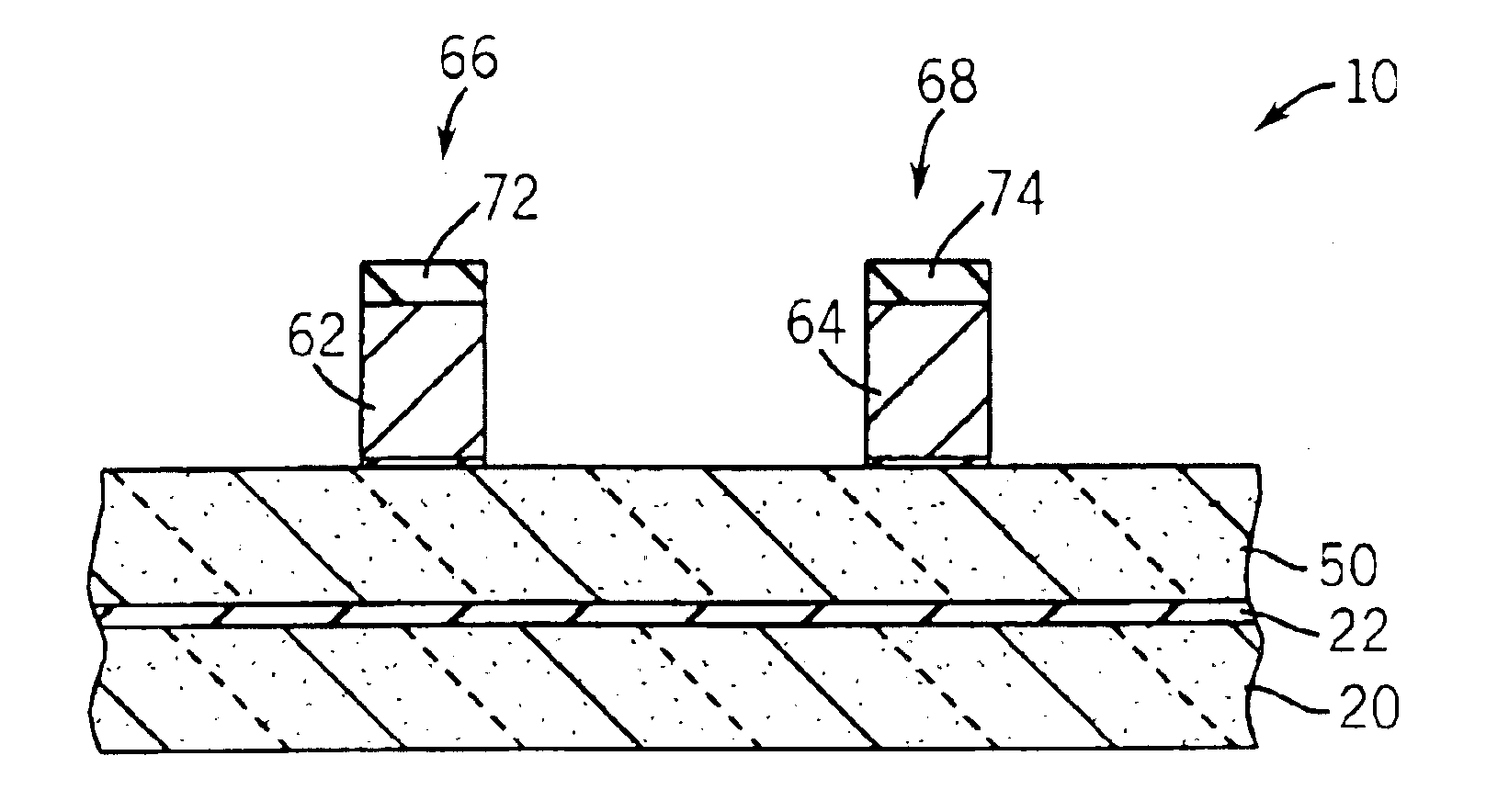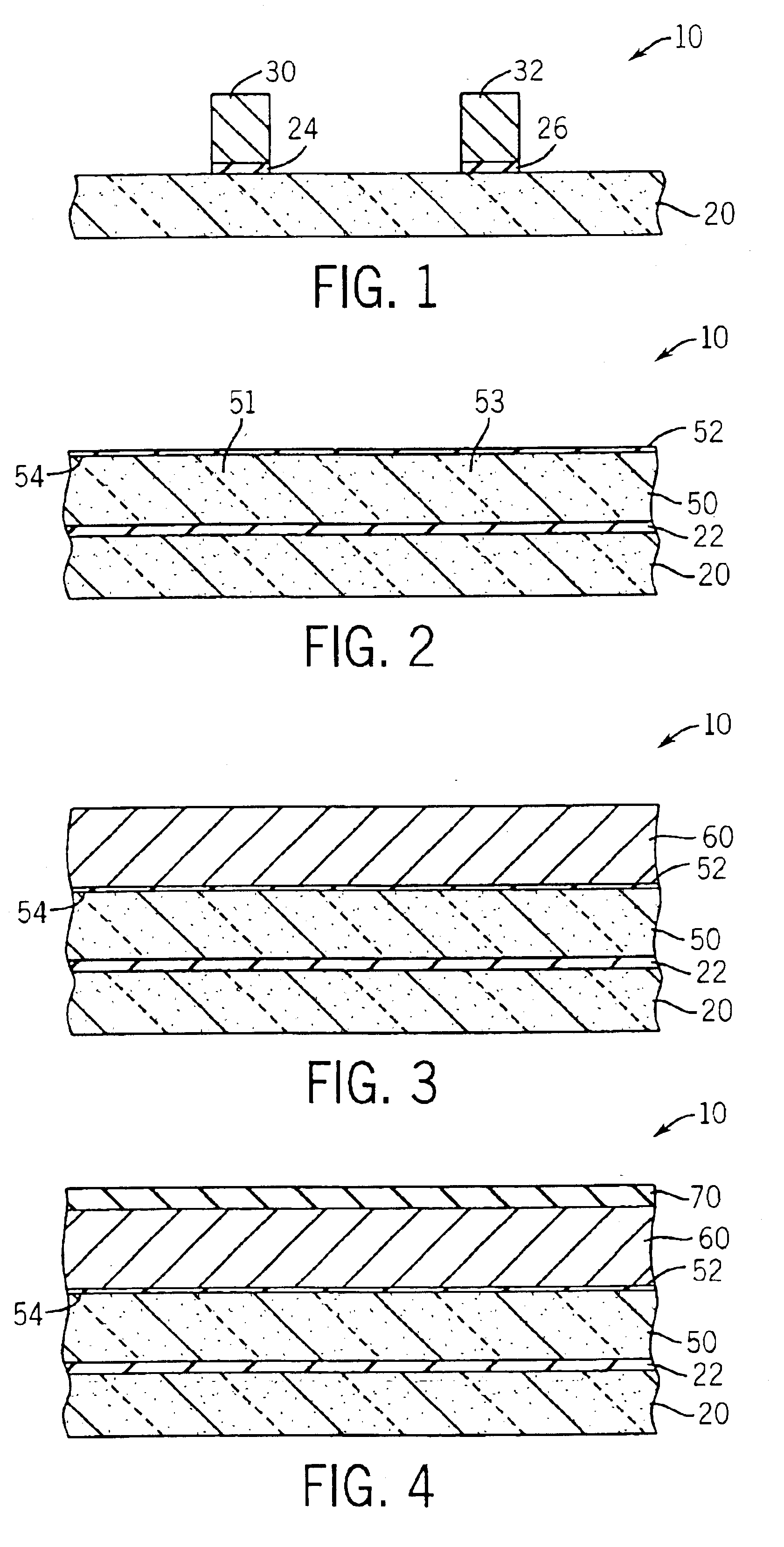Use of amorphous carbon hard mask for gate patterning to eliminate requirement of poly re-oxidation
a technology of amorphous carbon and mask, which is applied in the direction of basic electric elements, electrical apparatus, semiconductor devices, etc., can solve the problems of low melting point, difficult etching of metal gate conductors, and less compatibility with front-end processing
- Summary
- Abstract
- Description
- Claims
- Application Information
AI Technical Summary
Problems solved by technology
Method used
Image
Examples
Embodiment Construction
[0026]Referring to FIG. 1, a portion 10 of an integrated circuit (IC) includes a substrate 20 (e.g. a silicon wafer), line or gate conductors 30, 32, and oxide layers 24, 26. Oxide layers 24, 26 may be referred to as gate oxide layers. Portion 10 is preferably part of an ultra-large-scale integrated (ULSI) circuit having a million or more transistors, and is manufactured as part of the IC on a wafer made of a semiconducting material (e.g., silicon, gallium arsenide, etc.).
[0027]Gate conductors 30, 32 can be a polysilicon or polysilicon / germanium (SixGe(1-x)) material that controls charge carriers in a channel region formed between source and drain regions in substrate 20 to turn the transistor on and off. Gate conductors 30, 32 may be doped or undoped. In an exemplary embodiment, gate conductors 30, 32 are made of a polysilicon material that is doped with n-type (e.g., phosphorous) or p-type (e.g., boron) dopants and have a thickness between approximately 1000 and 2000 angstroms and...
PUM
| Property | Measurement | Unit |
|---|---|---|
| width | aaaaa | aaaaa |
| width | aaaaa | aaaaa |
| thickness | aaaaa | aaaaa |
Abstract
Description
Claims
Application Information
 Login to View More
Login to View More - R&D
- Intellectual Property
- Life Sciences
- Materials
- Tech Scout
- Unparalleled Data Quality
- Higher Quality Content
- 60% Fewer Hallucinations
Browse by: Latest US Patents, China's latest patents, Technical Efficacy Thesaurus, Application Domain, Technology Topic, Popular Technical Reports.
© 2025 PatSnap. All rights reserved.Legal|Privacy policy|Modern Slavery Act Transparency Statement|Sitemap|About US| Contact US: help@patsnap.com



